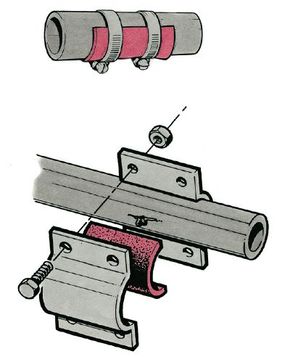How To Fix Leaky Pipes and Joints
There are all kinds of plumbing leaks. Some can flood your home, while others are not nearly so damaging. Your approach to stopping a leak depends on the type of leak it is. If the leak is at a joint, tighten the joint. If the leak is in a pipe, remove the section that is leaking and replace it with a new section. Unfortunately, this is more easily said than done.
For example, when you turn a threaded galvanized steel pipe to unscrew it from its fitting at one end, you tighten the pipe into its fitting at the other end. With copper pipe, the new section must be sweat-soldered in place. Most pipe replacement jobs are best left to a plumber, but as a do-it-yourselfer, you may consider an alternative: the pipe patch.
Advertisement
You'll find patch kits for plumbing leaks at the hardware store, or you can make your own with a piece of heavy rubber from an old inner tube and a C-clamp. Another possibility is to use a hose clamp with a rubber patch. Factory-made kits contain a rubber pad that goes over the hole in the pipe and metal plates that compress the rubber pad over the hole. A quick and easy way to stop a leak, the patch kit can even be used on a permanent basis if the pipe is otherwise sound.
Other quick and easy temporary measures for stopping pipe leaks include wrapping waterproof tape over the bad spot or rubbing the hole with a stick of special compound. Applying epoxy paste or inserting a self-tapping plug into the hole are other alternatives. When using waterproof tape, be sure to dry the pipe thoroughly before you start wrapping.
Start the tape about 2 to 3 inches from the hole and extend it the same distance beyond. For tiny leaks in pipes, use a compound stick available at most hardware stores. Simply rub the stick over the hole to stop the leak. The compound stick can even stop small leaks while the water is still running in the pipe. Epoxy paste can be applied only to dry pipes, and the water must be turned off.
The problem with all of these solutions is that a pipe that's bad enough to spring one leak often starts leaking in other places too. You may fix one spot only to see the pipe burst somewhere else. Especially in cases where the leak results from corrosion, the whole section of pipe will probably need replacing. This is typically a job for a professional plumber.
Dripping water doeesn't necessarily indicate a leak. Let's move onto how to deal with sweating pipes on the next page.
